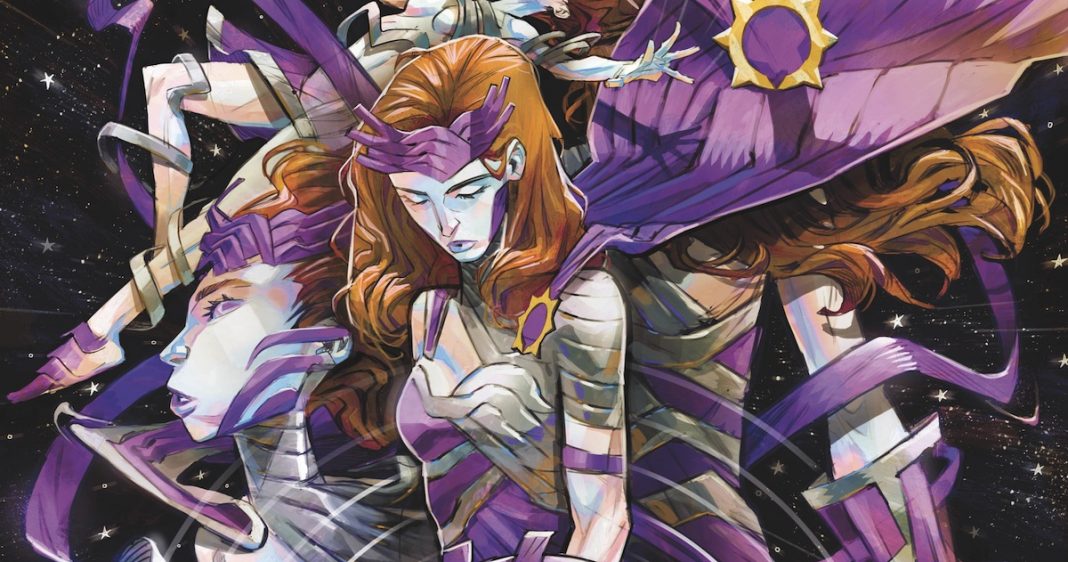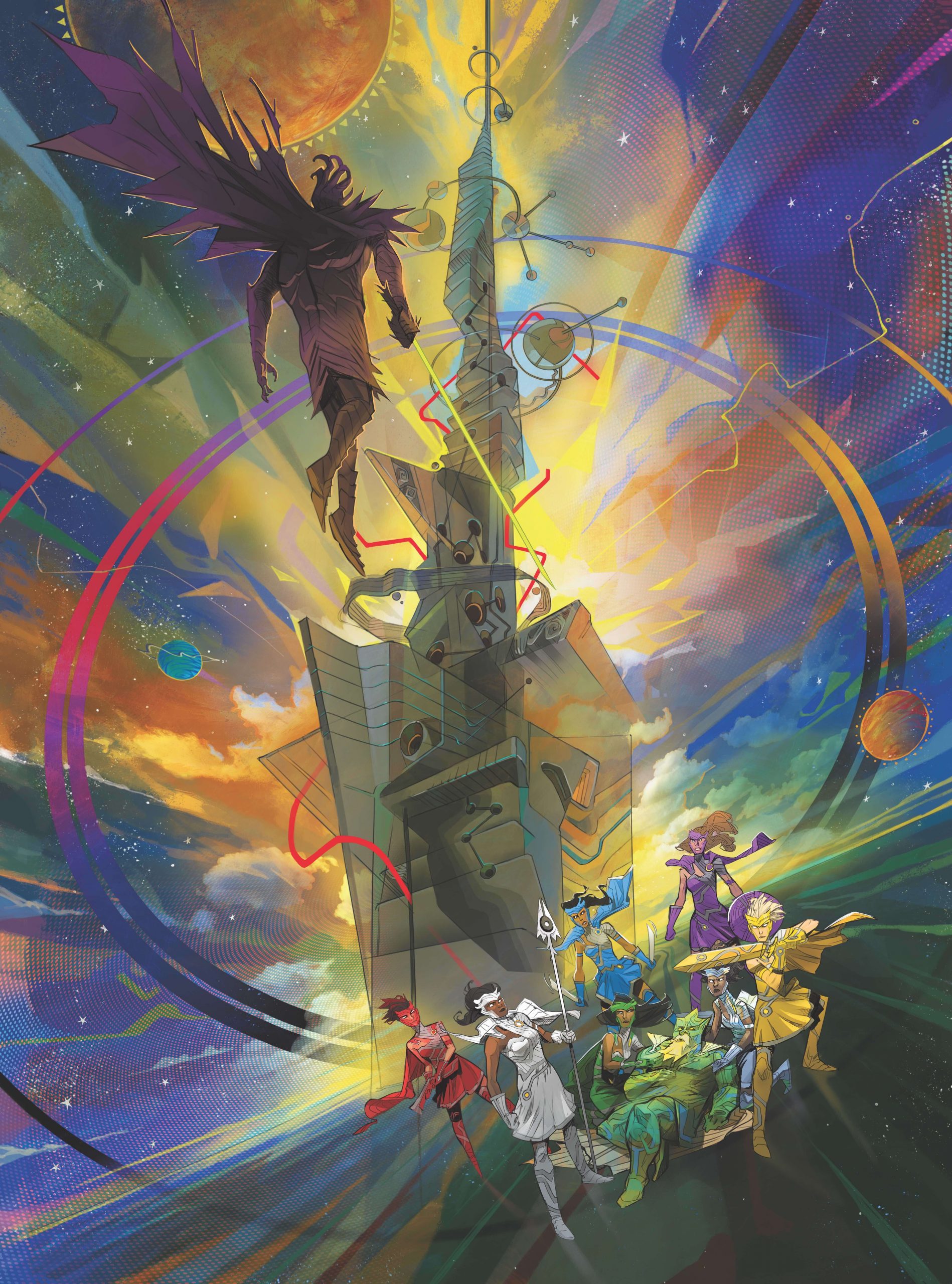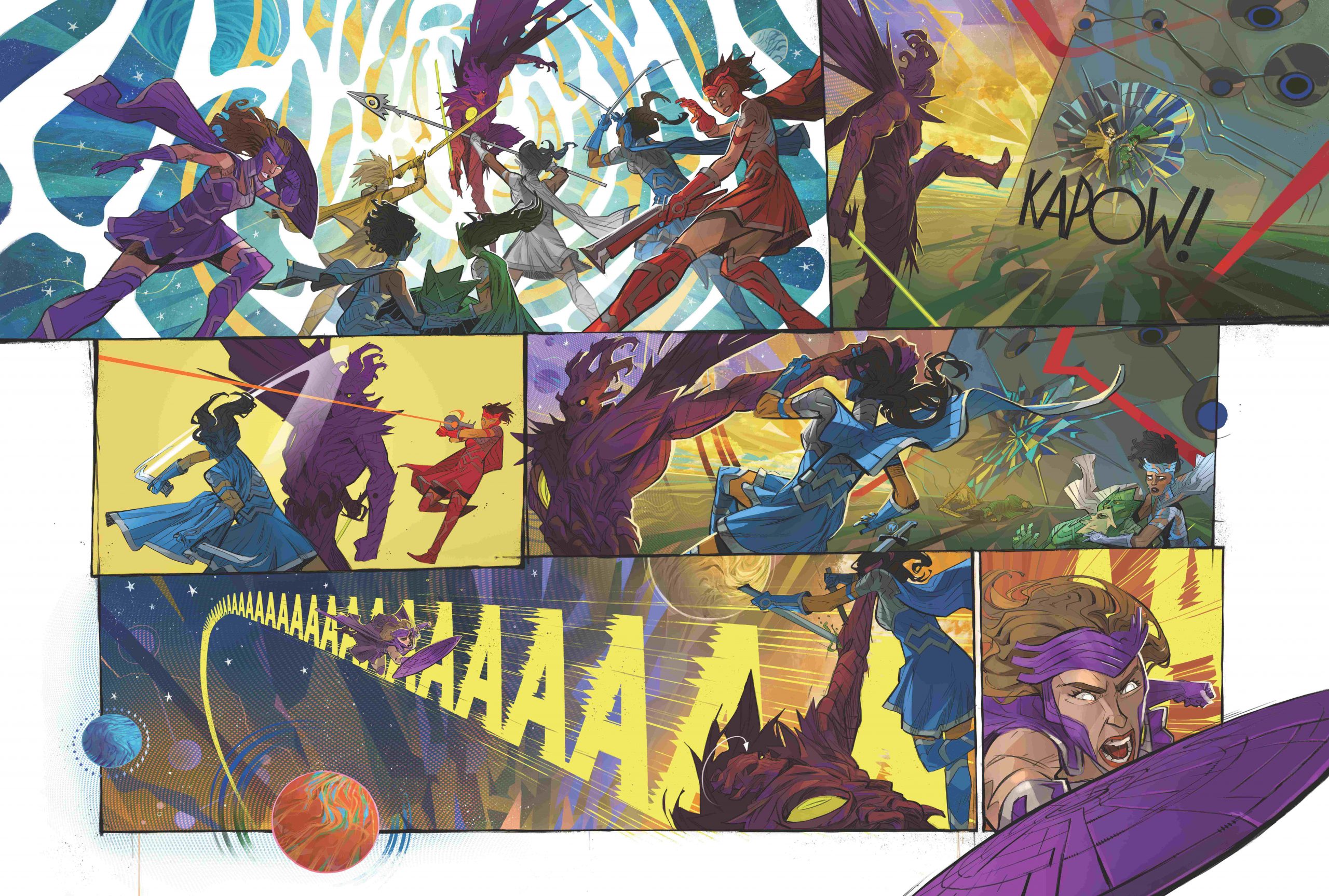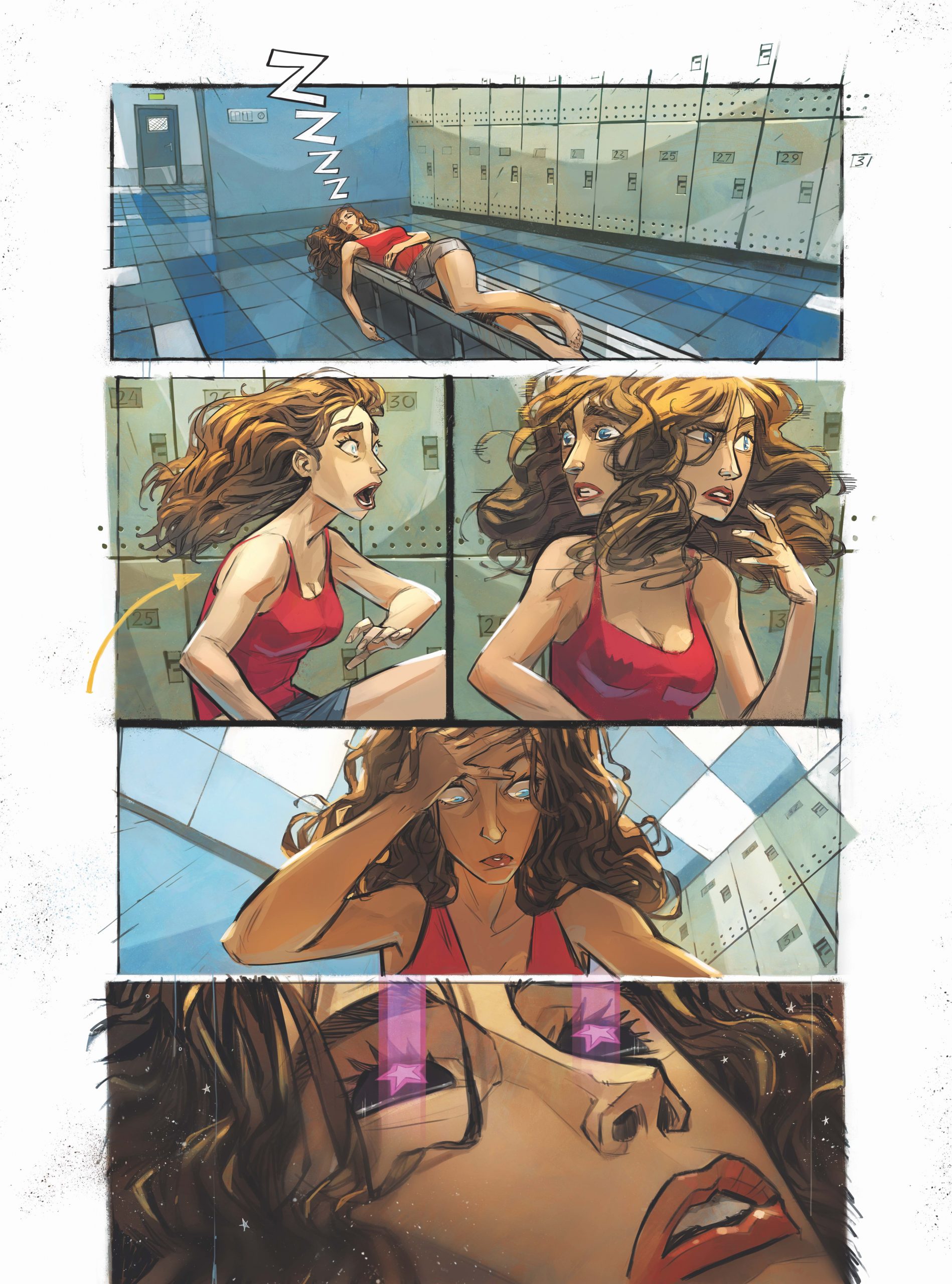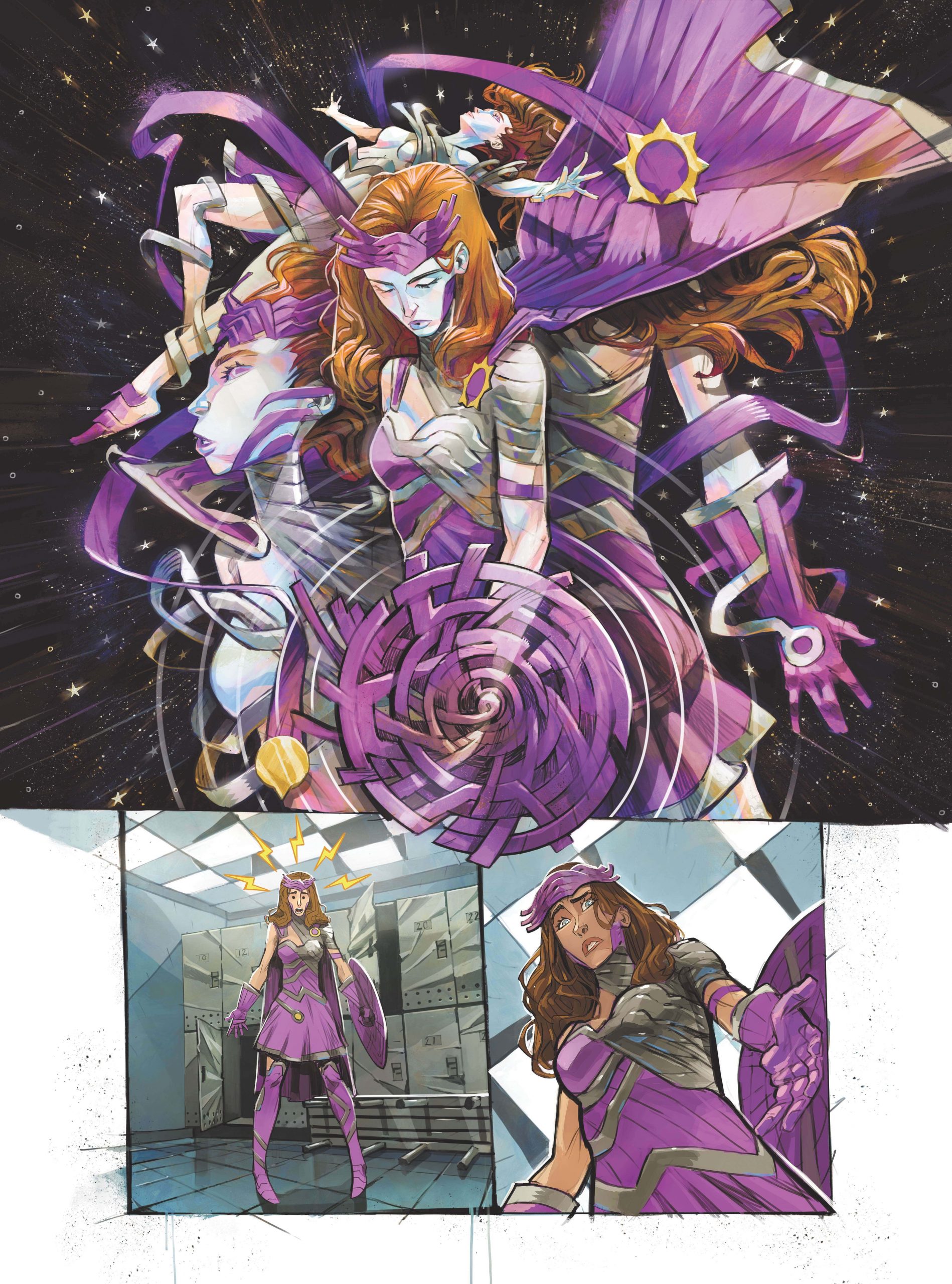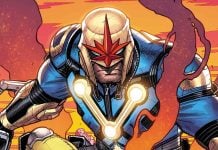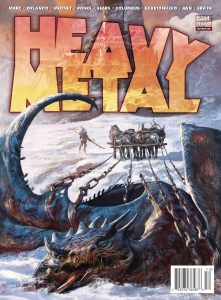
In Heavy Metal #304, the first chapter of STARWARD by Steve Orlando, Ivan Shavrin, and Saida Temofonte introduces readers to Stephanie Cohen, a brand-new character who is about to discover she has a whole lot of responsibility when it becomes apparent her destiny is to be conscripted into a mythical magical girl adventure.
The Beat caught up with Orlando to find out more about crafting the first Young Adult story for Heavy Metal, why it was important to include a transgender woman among the Seven Starward Sisters, and just what the Sisters are fighting for, anyway! Read on for all this and more, including two pages that we are proud to present for the first time online today here at The Beat!
AVERY KAPLAN: What’s it like to approach the task of world building for a brand-new world? Was it a challenge to find a particular entry-point for introducing readers to Stephanie’s world?
STEVE ORLANDO: It’s exciting! It’s always exciting, by the way, whether you’re adding to an existing mythology or creating your one, but with STARWARD it was especially so, since we weren’t just kicking off our own new cosmic myths, but we were also figuring out what “Young Adult” would look and act like at Heavy Metal. We want to keep all the subversive POVs that made the magazine iconic, and also present the late teens, early 20s in all their chaotic, emotional, epic complexity. With a goal as big as that, we needed a foothold on solid ground, and that became Stephanie Cohen, whose experience mirrors my own at that age as a dry, sarcastic Jewish person in the melee of figuring out my sexuality. Stephanie in many ways has the confidence I wish I had back then, but her fascination with myth, and incredibly sense of identity, allow her to cut through the cosmic madness of STARWARD no matter how heavy it gets.
KAPLAN: Do you have a personal history with Heavy Metal?
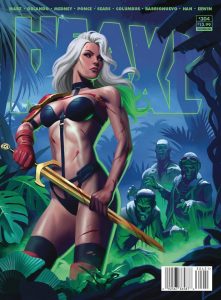
KAPLAN: Many of your stories involve queer identities. Will this also be true of Starward?
ORLANDO: It’s true from the start, and will evolve more and more as the series grows! Our first arc establishes the distinct personalities of all Seven Starward Sisters, and exploration of sexuality will begin to be a part of that as the first world-saving arc closes. It’ll continue as the adventures of the Starward Sisters continue and the threats they face change. But from the start, we’ll have a Starward Sister who is a transgender woman. As we did in my previous work NAMESAKE or ELECTRIC WARRIORS, we won’t be forcing her to disclose on-page, she’ll rather simply be an accepted part of the story from the start. Respect with representation comes first, so we’ll continue to work hard to do what we always do: celebrate these characters as well-rounded, complex people, and show the world for the unique and diverse place it is in reality.
KAPLAN: Do you have a favorite magical girl story (or are there any other stories that were particularly inspirational for Starward)?
ORLANDO: There was a HUGE inspiration for STARWARD in both SAILOR MOON and the early WONDER WOMAN stories featuring a young Diana. These are definitely the roots of STARWARD, along with the work of the young leaders I looked up to while working on SUPERGIRL like Malala Yousafzai and Emma Gonzalez.
KAPLAN: In addition to some epic mythological elements, Starward is also VERY funny! Was it important to you that this story include humor?
ORLANDO: It was important to me to show a different side of my work, for sure. And it was especially important in a book like STARWARD which uses my own young adulthood as a mirror for cosmic discovery and adventure. I was someone in 2nd Grade that was already being called too sarcastic and being put on weekly behavior reports. So going back to my college years and bringing to life the personalities I encountered working summer jobs was a chance I relished. Getting to do so as a cosmic adventure myth was a bonus.
KAPLAN: How can we expect Stephanie’s Jewish identity to play into the overall story of Starward (if we can)?
ORLANDO: Since it’s drawn from my own life, Stephanie being Jewish will always be part of her identity. But also like my life, it’s not the sum total of her identity, but one of many major factors that makes up who she is, expressing itself in a broad spectrum of ways. As with all representation I’ve been part of, we set out to make multi-faceted characters that aren’t identified solely by one thing. Much like my work on MIDNIGHTER, a story featuring complex gay characters, but not fetishizing their queer identity as the focus of the narrative, the story in STARWARD will approach Stephanie’s, and all her sisters’ identities, as celebrated traits making our leads who they are. But the story also won’t stop to put a spotlight on the parts of a whole, since that personally has never been something I’ve been comfortable with whether as a Jewish or Bisexual man.
KAPLAN: Are you missing comic conventions? Do you have any con stories you’d like to share?
ORLANDO: I miss connecting with readers in person, for sure. There’s no one story, but there’s just an overall feeling of connection that’s definitely lacking. It is always nice to travel far and see that the work we do, often holed up in our offices, shunning the sun like freelancers are known to do, does connect with so many people. That’s the face of the responsibility of being a creator, made real – the fact that we can’t take any story lightly, because we can never predict just what it might mean to someone else. All we can do is keep doing the work, writing with passion and research, and stepping out to engage readers with an open ear. And that last part is definitely something I miss.
KAPLAN: Are there any hints you can give us about what Stephanie might be facing next?
ORLANDO: Absolutely! Our first arc features Stephanie and her Six Sisters finding each other, unifying their personalities with their greater cosmic selves, and fighting their way free of the clockwork prison known as reality itself. On the other side of that fight? Kaos, the creature that’s been influencing human society for thousands of years and keeping us disorganized and uneasy. The Seven Starward Sisters’ first mission is one to drive Kaos back out of reality so that all of us – you, me, and the world – aren’t party to some quick fix, but that we’ve got a fair shot at a better future. The Starward Sisters are going to fight to give us a fighting chance, and in today’s world, I think that’s a goal I’m incredibly proud of. The real world has no gods of evil, no simple solutions, but what STARWARD does is show heroes fighting to, at a minimum, allow us to live our lives free of toxic influence, and look honestly with hope at tomorrow.
You can read the first chapter of STARWARD in Heavy Metal #304, along with many other available now!


